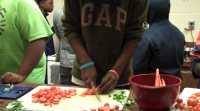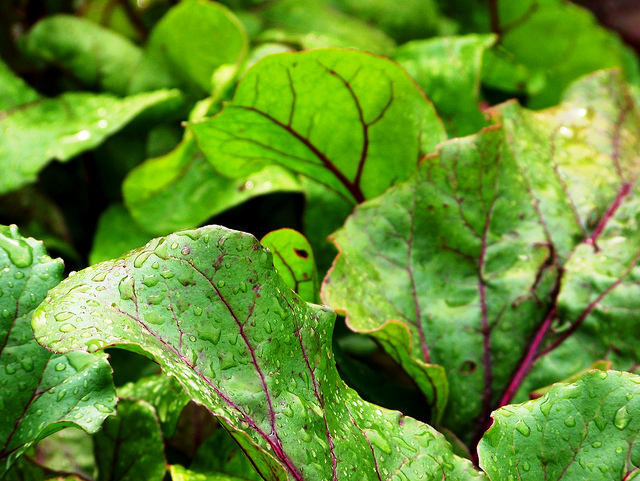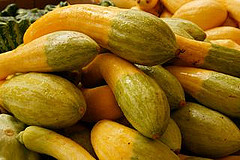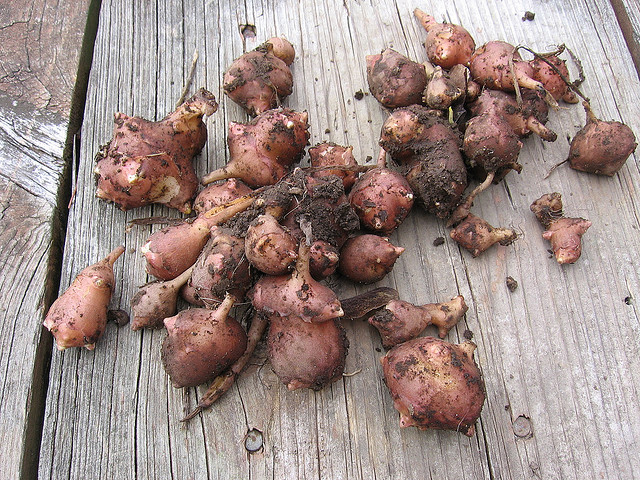Willie: When I started working at the Urban Ecology Center Washington Park branch in August 2010, I was immediately struck with the Learning Gardens, which face the lagoon outside of the Pavilion. These gardens were overflowing with tomatillos, herbs, varieties of lettuce and other yummy veggies. It immediately made me recognize that I was in a learning environment, a place that values gardening and made the building feel more like a home than a public space.

Each spring seeds are planted inside by a combination of folks: our Young Scientists Club kids, volunteers, staff members and participants in our NEEP programs. These seeds germinate and are then planted outside into the Learning Gardens after the beds are turned and prepared for the summer. Members of our Young Scientists Club, volunteers and staff water the seeds, weed and essentially nurture these plants until they are ready for harvest. Harvested food is prepared every "Food Friday" by our staff and the members of our Young Scientists Club. Our staff teaches the kids how to cook, thus completing the cycle of seed to nourishment. It's a beautiful thing that I never had the opportunity for when I was a kid. I believe it is vitally important in creating an understanding of where our food comes from and establishes a connection to the land.
When I first saw the Learning Garden, it made me feel like the Urban Ecology Center was a place of vibrant life. When I realized the full extent of the Learning Garden story it became clear that the Center is a hands-on source for change and community education, which is really cool.
Learn what to plant in your own garden!
Check out these foolproof tips from Erick Anderson, Community Program Coordinator at our Washington Park branch, on how to get started and maintain your own garden.
Erick: I've killed plenty of plants in my days as a gardener; by no means do I have a green thumb. Regardless, growing food is one of my favorite hobbies. And it's a natural fit for me – I like eating, and I like not paying for the stuff that I eat. And with the learning gardens at our Washington Park branch, I've had the pleasure of teaching hundreds of kids how to garden along with me! When you're getting kids excited about gardening, it helps to plant stuff that won't die before they get to eat it. Through years worth of mishaps, I've discovered a few plants that are foolproof enough to withstand even my prodigious plant-destroying skills. If you're new to gardening and limited on time and resources, these plants are great for getting started.
Swiss Chard 
Swiss Chard may be the most foolproof plant of all! It grows fast, you can plant them early, and they are edible at all points in their life cycle. As one of the cold-heartiest plants around, you can seed it early in spring. While many greens (particularly lettuce) will wilt or go to seed on the hottest days of summer, Swiss Chard is one of the few that will continue to thrive when the temperature climbs. And it'll last through a few frosts before it finally gives in to winter. It grows relatively quickly and strong, making it a good candidate to withstand pests like rabbits and woodchucks (the latter of which is the absolute nemesis of backyard gardeners). And it's versatile. The young greens are great in salad. The older greens are great for cooking. The stems can even be used in place of celery! It'll even grow in partial shade (albeit not as fast). Fun fact: this is one of the favorite foods of Washington Park's resident box turtle, Miss Jackson.
 Raspberries
Raspberries
Take a walk through just about any county park during the early summer and it'll be obvious to you why growing raspberries are so awesome - they grow pretty much anywhere. You'll find them at the base of a tree trunk, in full shade. This makes them a great candidate for any yard with limited sun. They also are perennial, meaning they'll come back year after year. And they are aggressive, meaning that in just a couple years a small number of plants will multiply into a huge collection. One of my yearly gardening routines is digging up some of my raspberries in one part of the yard and transplanting them to other shadier areas, giving them a chance to spread anew. And they pretty much weed themselves, because they don't even give weeds a chance to grow. Raspberries are highly recommended if you're a lazy gardener like I am.
 Zephyr Summer Squash
Zephyr Summer Squash
Summer Squash will make you mad! Your plant will take off and get huge in a short amount of time. You'll get a handful of delicious squash, and then your plant will suddenly just keel over and die. How is this possible? Squash Vine Borer, a very common insect pest, has larva that will burrow into the stems of squash and basically eat them out from the inside. This plant will go from thriving to dying seemingly overnight, and there's little you can do about it. Certain varieties of squash are more fragile than others. Zucchini, popular though it may be, is pretty defenseless against the vine borer. Same with the straighneck yellow summer squash. But certain varieties are more tolerant to the borer. I've had lots of luck with the Zephyr variety. It basically tastes the same as zucchini, can be used in the same recipes, and is more likely to survive an insect attack. Plus, just a single plant will produce more squash than you'll probably know what to do with. You may not find the seeds at the store, but look on websites such as Johnny's Seeds to order it.
 Sunchoke (Jerusalem Artichoke)
Sunchoke (Jerusalem Artichoke)
This one easily flies under the radar, but it's simply awesome. It's basically a little sunflower (I know my botanist colleagues will call me out on incorrectly calling it a sunflower, but let's not split hairs here). The root is starchy like a potato, and can be used in similar recipes. It's a perennial and super aggressive. At the end of the growing season, you can dig out most of the roots, and as long as there's at least some small pieces of root left, it'll grow back even stronger the next year. This is a favorite of our Young Scientists Club Food Fridays program here at Washington Park!






